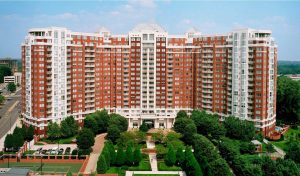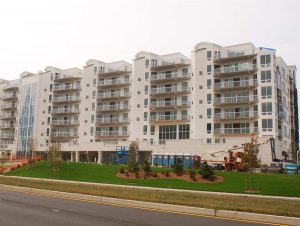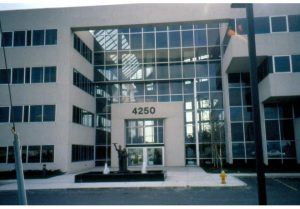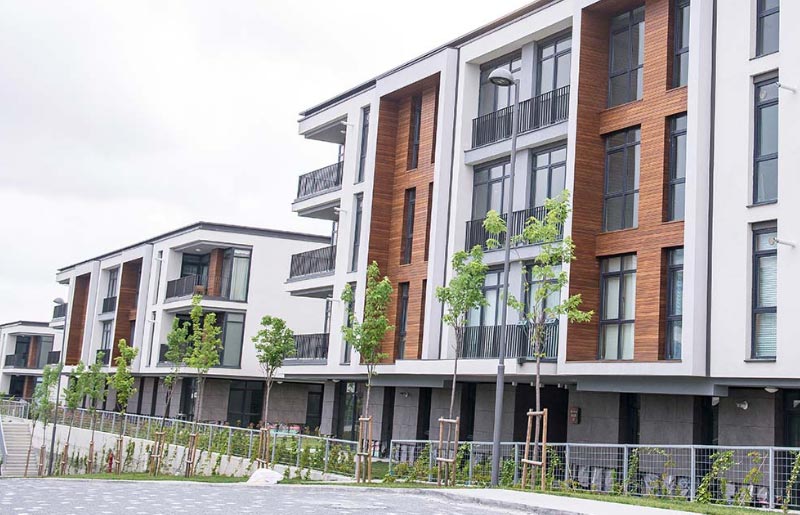
Contact Vescom
Composite Joist Structural Floor Systems Oklahoma
Vescom’s composite joist construction floor system offers stronger and shallower floors at a fraction of the cost of traditional steel floor framing methods.
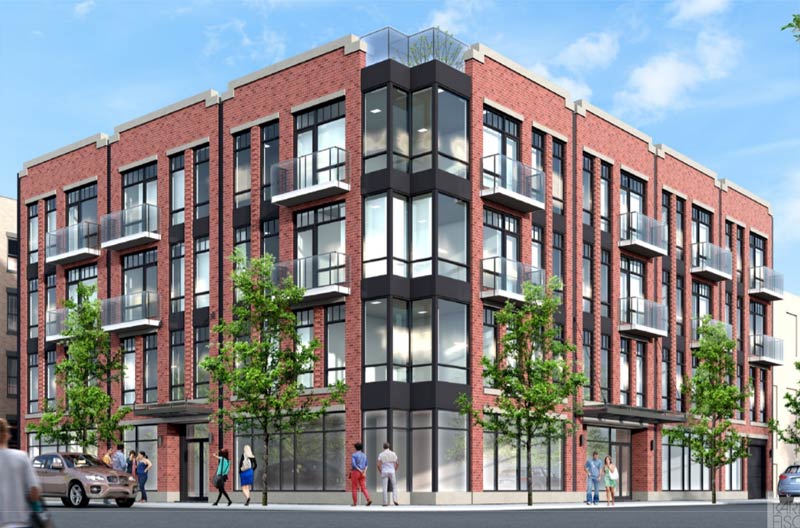
Vescom International is a steel joist and structural floor system manufacturer. The Vescom Joist Structural Floor System can be used all types of multi-story residential, multi-residential, institutional, healthcare, and commercial constructions and buildings. Vescom Joists can be used to construct structures up to 19 stories and are ideal for:
- Multi-residential constructions
- Apartment Buildings
- Condominiums
- Student Housing
- Hotel and Resorts
- Senior Living and Nursing Homes
- Medical Facilities
- Office Buildings
- And Many Other Structures
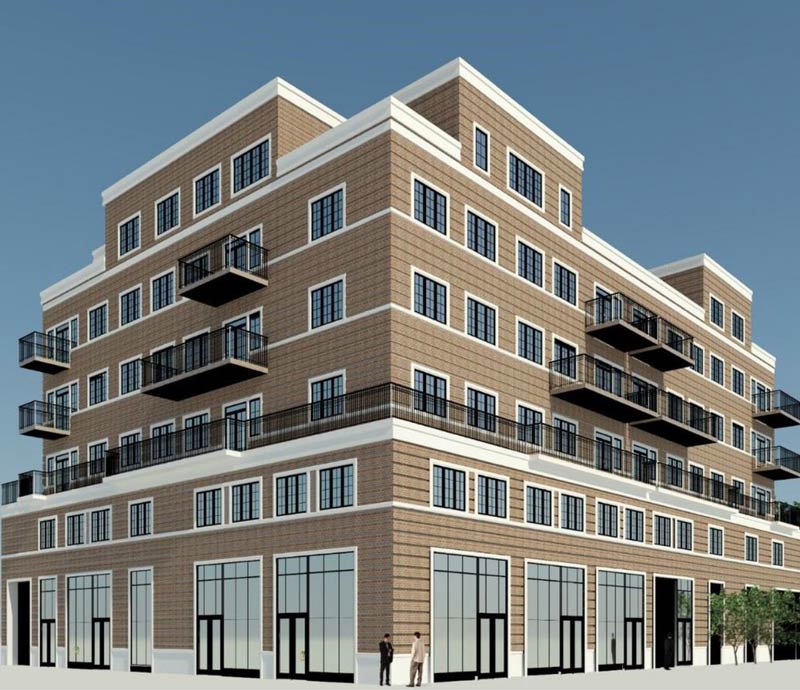
Composite Floor Joists in Oklahoma, OK
Vescom International manufactures the following composite joist flooring solutions and delivers them to Oklahoma, OK:
- Composite joists
- Composite floor joists
- Steel floor framing
- Concrete joist system
- Concrete joist support
- Steel flooring system
- Structural flooring
- Structural floor system
- Joist slab
- Structural floor systems
- Light gage steel framing
- Steel floor joists residential
- Composite building
- Structural floor
- Composite floor systems
- Steel floor system
- Composite concrete flooring
- Steel frame flooring
- Steel flooring systems
- Floor joist system
- Concrete floor joist
- Suspended floor systems
- Concrete floor joists
- Steel roof decks
- Metal deck
- Roof decking
- Steel deck
- Joist girder
- Steel girder truss
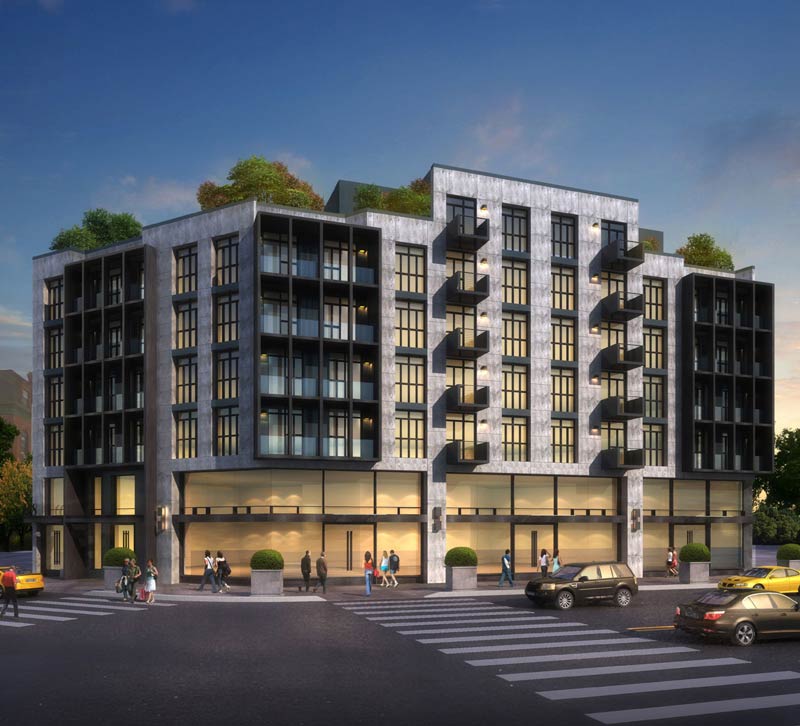
Multi-Residential Construction in Oklahoma:
If you are searching for a company to provide any of the following in Oklahoma, OK, kindly consider sending your drawings to our team at Vescom. We will provide you with a quote using our composite joist system that could save you significantly on your construction costs.
- Metal deckings
- Composite deck
- Floor systems
- Rated floor
- Cold form steel
- I-span
- Steel components
- Wood joists
- Floor structure
- Steel beams
- Steel trusses
- Floor joist
- Ceiling joist
- Decking joists
- Floor trusses
- Steel joist
- Bar Joist
- Steel deck
Vescom recommends these organizations, their content and material for information about the composite joist industry and technology:
If you are searching for a company to provide any of the following, kindly consider sending your drawings to our team at Vescom. We will provide you with a quote using our composite joist system that could save you significantly on your construction costs.
Frequently Asked Questions
Q: What is a composite joist?
- A: A composite joist, also known as a composite steel joist, is a type of structural member used in construction to support floors and roofs. It is made by combining two or more materials, usually steel and concrete, to create a stronger and more efficient joist.
Composite joists typically consist of a steel top chord, a steel bottom chord, and a concrete slab sandwiched between them. The steel chords provide tensile strength and rigidity, while the concrete slab provides compression strength and mass. The combination of these materials results in a lightweight and durable joist that can span long distances and support heavy loads.
Composite joists are commonly used in commercial and industrial buildings, as well as in multi-story residential buildings. They offer several advantages over traditional joists, including increased strength, stiffness, and fire resistance, as well as improved acoustic and thermal performance.
Q: What is structural flooring?
- A: Structural flooring refers to a type of flooring system that is designed to provide both a walking surface and structural support for a building or structure. Unlike non-structural flooring, such as carpet, vinyl, or tile, structural flooring is capable of bearing heavy loads and transferring them to the building's foundation or support structure.
Structural flooring is commonly used in commercial and industrial buildings, such as warehouses, factories, and distribution centers, as well as in multi-story residential buildings. It is also used in bridge construction, where it serves as both a roadway and a structural element.
There are several types of structural flooring systems, including concrete slabs, precast concrete planks, steel decking, and composite joists. The choice of flooring system will depend on a variety of factors, including the building's design, the required load-bearing capacity, and the desired aesthetic appearance.
Overall, structural flooring plays a critical role in the overall strength and stability of a building or structure, and it is an essential component of any construction project that requires durable and reliable support.
Q: What are steel trusses?
- A: Steel trusses are a type of structural element commonly used in the construction of buildings, bridges, and other structures. They are typically made from steel beams arranged in a triangular pattern, with each beam forming one side of the triangle.
The triangular shape of steel trusses provides excellent strength and stability, allowing them to span long distances and support heavy loads without the need for intermediate columns or supports. This makes them ideal for use in large, open buildings and structures, such as warehouses, factories, and sports arenas.
Steel trusses can be manufactured in a variety of shapes and sizes, depending on the specific needs of the project. They can be straight or curved, and may be designed to have a single or multiple web configurations. Additionally, they can be bolted, welded, or riveted together to form larger assemblies, depending on the required load capacity and structural performance.
Overall, steel trusses are a versatile and durable structural element that offer many advantages in terms of strength, stability, and ease of construction. They are commonly used in a wide range of applications and are an essential component of many modern construction projects.
Vescom International provides exceptional structural performance, unmatched in the marketplace, for multi-level construction in the following states in The United States of America:
Alabama, AL – Alaska, AK – Arizona, AZ – Arkansas, AR – California, CA – Colorado, CO – Connecticut, CT – Delaware, DE – Florida, FL – Georgia, GA – Hawaii, HI – Idaho, ID – Illinois, IL – Indiana, IN – Iowa, IA – Kansas, KS – Kentucky, KY – Louisiana, LA – Maine, ME – Maryland, MD – Massachusetts, MA – Michigan, MI – Minnesota, MN – Mississippi, MS – Missouri, MO – Montana, MT – Nebraska, NE – Nevada, NV – New Hampshire, NH – New Jersey, NJ – New Mexico, NM – New York, NY – North Carolina, NC – North Dakota, ND – Ohio, OH – Oklahoma, OK – Oregon, OR – Pennsylvania, PA – Rhode Island, RI – South Carolina, SC – South Dakota, SD – Tennessee, TN – Texas, TX – Utah, UT – Vermont, VT – Virginia, VA – Washington, WA – West Virginia, WV – Wisconsin, WI – Wyoming, WY
VESCOM News:
A Revolution in Structure
Explore our website to see how Vescom is revolutionizing the construction industry.
Vescom Typical Details
To assist in the work of specifying professionals, we have developed typical Vescom details for their use. These details...
Fun Facts About Oklahoma
- Capital: Oklahoma City
- Year Founded: 1907
- Major Cities: Oklahoma City, Tulsa, Norman, Broken Arrow, Lawton, Edmond
- Borders: Texas, New Mexico, Colorado, Kansas, Missouri, Arkansas
- Gross Domestic Product (GDP) Millions USD: $160,953
- Population: 3,450,654
- Land Area (Sq Miles): 69,919
- High Point (Feet): 4,973
- Other Facts: “Key Industries: Agriculture including grains, cattle, dairy products, and cotton, natural gas, oil, petroleum products, machinery, aircraft parts, electronic equipment, and food products. How Oklahoma got its name: The name Oklahoma comes from two words in the Choctaw Indian language: okla, which means people, and humma, which means red. Oklahoma State Symbols: State Nickname: Sooner State; State Slogan: Native America; also on its license plate; State Motto: Labor omnia vincit (Labor conquers all things); State flower: Oklahoma Rose; State Bird: Scissor-tailed Flycatcher; State Fish: White bass; State Tree: Redbud; State Mammal: Bison, Common Raccoon; State Foods: Barbecued Pork, Sausage, Biscuits and Gravy, Grits, Fried Okra, Pecan Pie; Becoming a State: Date Admitted: Saturday, November 16, 1907; Number Admitted: 46; Prior Name: Oklahoma Territory & Indian Territory; Postal Abbreviation: OK. The Geography of Oklahoma: Total Size: 68,667 sq. Miles (source: 2003 Census); Geographical Low Point: Little River at 289 feet, located in the county/subdivision of McCurtain (source: U.S. Geological Survey); Geographical High Point: Black Mesa at 4,973 feet, located in the county/subdivision of Cimarron (source: U.S. Geological Survey); Central Point: Located in Oklahoma County approx. Eight miles north of Oklahoma City (source: U.S. Geological Survey); Counties: 77 (source: National Association of Counties); Bodies of Water: Lake Texoma, Eufaula Lake, Grand Lake of the Cherokees, Red River, Arkansas River, Canadian River. Famous People: Johnny Bench – Professional baseball player; Vince Gill – Country music singer and songwriter; Ron Howard – Actor and movie director; Toby Keith – Country music singer and songwriter; Mickey Mantle – Professional baseball player; Reba McEntire – Country music singer; Dr. Phil McGraw – Talk show host; Chuck Norris – Actor and martial arts expert; Brad Pitt – Actor; Maria Tallchief – Ballet dancer; Jim Thorpe – Athlete and Olympic medalist; Carrie Underwood – Singer and American Idol winner; Sam Walton – Founder of Walmart stores; More Fun Facts: Oklahoma has the largest population of Native Americans of any state.; The name Oklahoma means ‘red people’.; Cimarron County in Oklahoma borders 5 states. More states than any other US county.; The parking meter was invented in Oklahoma.; The name Sooner State comes from people who tried to sneak into Oklahoma and make land claims ‘sooner’ than they were allowed.; Oklahoma! Is the name of a famous 1943 musical.; Many American Indian tribes were forced to move to Oklahoma including the Cherokee, Seminole, Choctaw, Chickasaw, and Creek peoples.; The first shopping cart was invented by Sylvan Goldman, owner of the Piggly Wiggly supermarket chain.; The National Cowboy Hall of Fame and Museum is located in Oklahoma City.; The tribal capital of the Cherokee Nation is located in Tahlequah.; Professional Sports Teams: Oklahoma City Thunder – NBA (basketball); Tulsa Shock – WNBA (basketball).” Citation: Nelson, Ken. “United States Geography for Kids: Oklahoma .” Ducksters, Technological Solutions, Inc. (TSI), https://www.ducksters.com/geography/state.php?State=Oklahoma
- Page ID: Oklahoma_United_States_36
- Set ID: United_States_State

